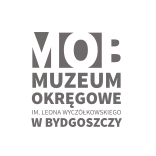World War I
I was hidden in the woods of the Minsk area during the outbreak of the war. The local peasants reported to the local authorities that I was making plans. I departed, and the family I stayed with told me that an order arrived for my arrest. If they have given me the passport, nothing would have happened, but I was advised to go away. Difficult experiences in Vilnius. I wasn’t sure I would be able to get out from there. If they arrested me, I could have been sent to Siberia. Fear, panic, lack of trains, stagnation. People stand in line and I am approached by a doorman: Would you like to go? Then he pushes me to the train in which the Russian staff was traveling … I was late in Warsaw and did not get to Krakow. After my arrival from Vilnius, I lived in Warsaw at Herman, upstairs, on the second floor. They took away my passport … In the beginning I felt anxious, and later indifferent. On the last night, when the Muscovites were leaving Warsaw, we knew about it. Panic, they were supposed to blow up buildings, the post office, Łazienki Park, and later… At 8:00 in the morning… Zabiełło: Guten Morgen Herr Professor. The city was bustling. Germans entered the city, the Bavarian Army from Piaseczno. The initial days were probably the most unpleasant. Accidents led to this state of apathy. I was painting the Old Town. I was constantly walking on roofs. I had no passport, which was taken from me; if they arrested me, I would have ended up with a bullet in my head. I painted a skeleton stretched on the cross, covered with spider web, but I damaged it.
In Warsaw, I painted portraits [friends of Herman, Miłosz Kotarbiński, Lentz, Jasieński, Barącz, Szymanowski, Bielicki, Szwarc, etc.], flowers; I made various lithographs; I organized some four or five exhibitions. The painting Christ was in the “Zachęta” Society for Encouragement of Fine Arts. It was followed by a period of fatigue and depression. Germany captured Poland. A new partition, everything ended. I changed all heads on this lithograph [lithograph from the painting in Zachęta] to sculls; several copies have been preserved … Just like in the case of Wyspiański – horrible. For a year of the war I worked like mad under the influence of events. My things look uneven, since the discharge of energy was incredible.
1914/5 in Warsaw, followed by Krakow, then Legionowo, and back to Krakow… Shoes in the Legions, double skin and cover, just like Sienkiewicz advised me in the past. A self-portrait in the legionary’s uniform made in 1916, in the Albertina, Vienna; it was purchased by the Min. W.R. i O.P. [Ministry of Religious Denominations and Public Enlightenment]. One of them was taken to Warsaw, to Zachęta. Krywult bought it for himself, since it is nowhere to be found in Zachęta.
I wish I had the Ukrainian Portfolio or Old Warsaw.
Legionowo. [1916] I made an ink drawing of the Campo Santo Legion Cemetery. A deforested area with some huge trees and graves with crosses, hopeless and dreary. A trumpeter, sanitary unit or kitchen. Fire at night. You travel and you see a glow, the cart driver looks back; it’s fire, and a forest looms into view. A synthesis of the war, sorrow.


